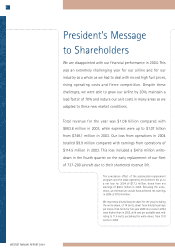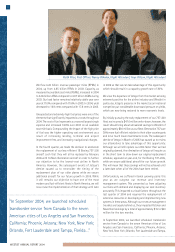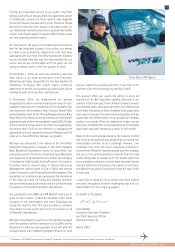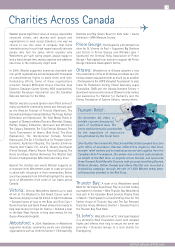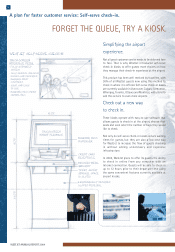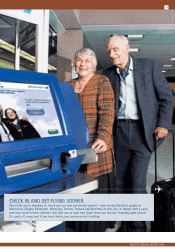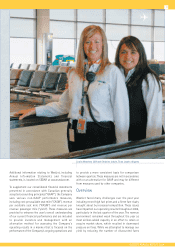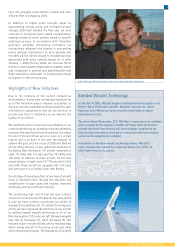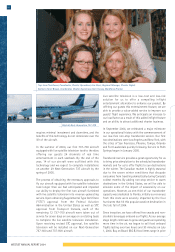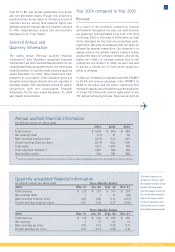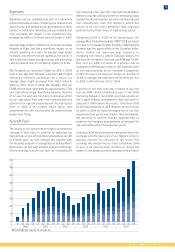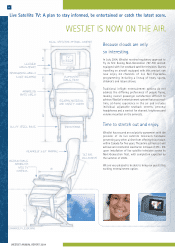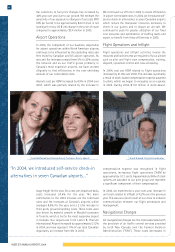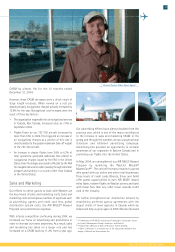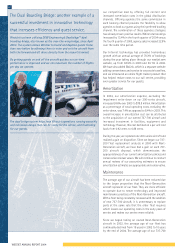Westjet 2004 Annual Report Download - page 18
Download and view the complete annual report
Please find page 18 of the 2004 Westjet annual report below. You can navigate through the pages in the report by either clicking on the pages listed below, or by using the keyword search tool below to find specific information within the annual report.
WESTJET ANNUAL REPORT 2004
18
“With industry dynamics changing, we
decided to revisit our growth plans over
the next few years and increase our focus
on efficiency in operations…”
offered, we found this to be ineffective and our load
factors suffered. As a result, and in order to compete
effectively, we have had to match the discounted fares
that our competitors continued to offer. This resulted
in our yield declining by 5.1% over 2003.
Nevertheless, our revenues grew by 22.5% over the
previous year while our capacity increased by 30.4%.
With industry dynamics changing, we decided to revisit
our growth plans over the next few years and increase
our focus on efficiency in operations, lowering unit
costs and enhancing our customer service. In December
2004, we elected to accelerate the replacement of our
older 737-200 fleet which we believe will create several
advantages for WestJet, including the creation of a
younger, more fuel-efficient fleet that is capable of
greater utilization. We estimate that our 737-700
aircraft are 30% more fuel efficient on a per unit cost
basis than our 737-200s and incur 88% less
maintenance in the earlier years of operation.
In accordance with Canadian generally accepted
accounting principles, the change in our aircraft
replacement plan required an impairment analysis to
be performed for the 200-series aircraft, related rotable
parts, equipment and flight simulator. This analysis
indicated the estimated undiscounted future cash flows
that will be generated by each of these 200-series
aircraft and related parts, in many cases, will be less
than their respective carrying values. Consequently,
the carrying values of the 200-series and their related
parts were written down to a fair market value. This
required us to record an impairment loss of $47.6
million in our operating results for the year ended
2004. The impact of this write-down contributed to a
net loss of $17.2 million for the year and $46.3 million
for the fourth quarter.
Although our profitability was sacrificed for this period,
the decision was made in order to obtain a stronger,
even more resilient low-cost infrastructure in the long-
term. Our older aircraft were to be completely replaced
by February 2006 as we continue to take delivery of
new Boeing Next-Generation aircraft throughout the
year. However, the subsequent demise of Jetsgo in
March of 2005 has caused us to review our alternatives
to take advantage of this opportunity. Although we will
still replace our 200s faster than we had originally
planned, the elimination of Jetsgo will require us in the
short term to slow down our original replacement
schedule, approved at year-end, for the Boeing 737-
200s, while we secure additional aircraft for our future
growth. This will result in growing the airline by
approximately 30% in 2005 and will still allow us to
Larry Pavao, Analyst, Measurement Solutions
TAC Agent


